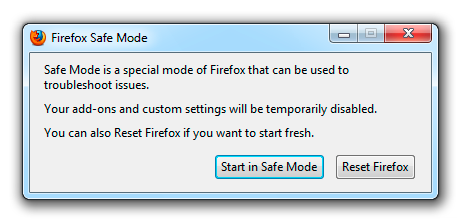
Firefox adds https to every website
No matter what website I try to go to, Firefox adds https to the front and then shows a problem with the security certificate and won't let me see the site. So for example, I type this EXACT address in the address bar:
and Firefox changes it to:
I deleted the cert8.db file and this did not fix the problem. I then tried internet explorer and it does the same thing. This is one windows 8.
HELP!
firefox_matt द्वारा
चुने गए समाधान
For my experience, the problem is not https, but the clock of your computer. Check if your computer has the right time and date (month and year, very important). Because security certificate has a time limit, and won't work if your computer think he is 6 month earlier or 6 month later.
संदर्भ में यह जवाब पढ़ें 👍 1All Replies (7)
This is windows 8, not windows 7.
Thanks.
चयनित समाधान
For my experience, the problem is not https, but the clock of your computer. Check if your computer has the right time and date (month and year, very important). Because security certificate has a time limit, and won't work if your computer think he is 6 month earlier or 6 month later.
Try Firefox Safe Mode to see if the problem goes away. Firefox Safe Mode is a troubleshooting mode that temporarily turns off hardware acceleration, resets some settings, and disables add-ons (extensions and themes).
If Firefox is open, you can restart in Firefox Safe Mode from the Help menu:
- In Firefox 29.0 and above, click the menu button
 , click Help
, click Help  and select Restart with Add-ons Disabled.
and select Restart with Add-ons Disabled.
- In previous Firefox versions, click on the Firefox button at the top left of the Firefox window and click on Help (or click on Help in the Menu bar, if you don't have a Firefox button) then click on Restart with Add-ons Disabled.
If Firefox is not running, you can start Firefox in Safe Mode as follows:
- On Windows: Hold the Shift key when you open the Firefox desktop or Start menu shortcut.
- On Mac: Hold the option key while starting Firefox.
- On Linux: Quit Firefox, go to your Terminal and run firefox -safe-mode
(you may need to specify the Firefox installation path e.g. /usr/lib/firefox)
When the Firefox Safe Mode window appears, select "Start in Safe Mode".

If the issue is not present in Firefox Safe Mode, your problem is probably caused by an extension, theme, or hardware acceleration. Please follow the steps in the Troubleshoot extensions, themes and hardware acceleration issues to solve common Firefox problems article to find the cause.
To exit Firefox Safe Mode, just close Firefox and wait a few seconds before opening Firefox for normal use again.
When you figure out what's causing your issues, please let us know. It might help others with the same problem.
It was the clock. I never would have guessed this. Thanks a ton!
You're welcome. When I was under Xp, it made me crazy for times to times, cause I was unable to find a solution. In fact, this was the battery of my computer's motherboard that was in end of life, so from time to time, I didn't have the correct date, and suddenly, I had tons of problems with internet, from nowhere.
I read my answer, and it is not very clear, so here is the explanation again.
The web works with security certificates for nearly all the sites (when a site doesn't have a certificate, Firefox ask if you are sure you want to continue). When a site doesn't have a validated certificate, then Firefox considers that there is a heavy security problem, and can't do the connection. As the security certificates are limited in time (maybe 3 or 6 months, I'm not sure), they are considered validated only during this period. If your computer believes it is 5 years ago (like it could happen with a problem of battery on the motherboard), then when Firefox try to connect to a website, it considers the certificate false because it is certified only in 5 years, and Firefox will refuse the connection. Change the date on the clock of Windows, and you will immediatly be able to surf on the web (by closing and starting again Firefox).
